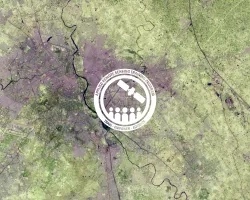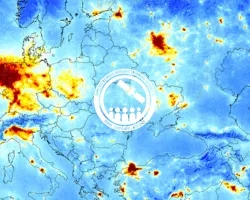Description
Harmful algal blooms (HABs) can have a negative impact on the ecosystem and human health. Satellite remote sensing is able to collect data frequently and over a large area to identify impaired water quality from HABs. This data can help decision-makers decide where to take water samples, determine what toxins are in the water, decide whether they need to change or move drinking water intakes, and decide whether a fishery needs to be closed. Remote sensing data also enables individuals and organizations to have more flexible plans for water sampling and leads to a more efficient and appropriate allocation of resources for protecting human health.
- Session 2C of Fundamentals of Aquatic Remote Sensing
By the end of the training, attendees will be able to:
- Identify NASA’s Earth Science remote sensing data products for the identification and monitoring of HABs
- Describe how coupled remote sensing and modeling approaches are used in decision support tools
- Use a selection of NASA Earth Science data tools to monitor HABs
Local, regional, state, federal, and international organizations interested in using satellite imagery for coastal and ocean applications.
- Four 1-hour sessions
An overview of marine and freshwater HABs, how HABs can affect ecosystems and human health, in situ monitoring methods of HABs, how remote sensing detects HABs, examples of HAB monitoring tools, and the advantages and limitations of using remote sensing in aquatic environments.
Materials:
Materiales en Español:
Satellites and sensors for HAB detection and monitoring (subset in fundamentals of remote sensing: MODIS, VIIRS, Sentinel 2-a & 3, and Landsat 8), ocean color data products used to monitor and detect HABs, NASA satellite data access tools, NASA satellite data processing tools (including SeaDAS), and how to create an automated tool.
Materials:
Materiales en Español:
Featuring Guest Speaker: Clarissa Anderson, Southern California Coastal Ocean Observing System
How HABs affect marine ecosystems and human health, an overview of coupled model and remote sensing tools for understanding HABs, an accuracy assessment, a demonstration of Clarissa Anderson’s California Harmful Algae Risk Mapping (C-HARM) System.
Materials:
Materiales en Español:
Featuring Guest Speaker: Wilson Salls, EPA CyAN Project
An overview of cyanobacterial HABs, freshwater cyanoHAB monitoring tools (e.g. HAB Tracker, Great Lakes HAB bulletin), how citizen science can be used for HAB monitoring, and a course summary.
Materials:
- Presentation Slides - Introduction
- Presentation Slides - Large-Scale Monitoring
- Homework Assignment 2
- Q&A Transcript
Materiales en Español:
- Diapositivas de la Presentación - Introduction
- Diapositivas de la Presentación - Large-Scale Monitoring
- Tarea 2



